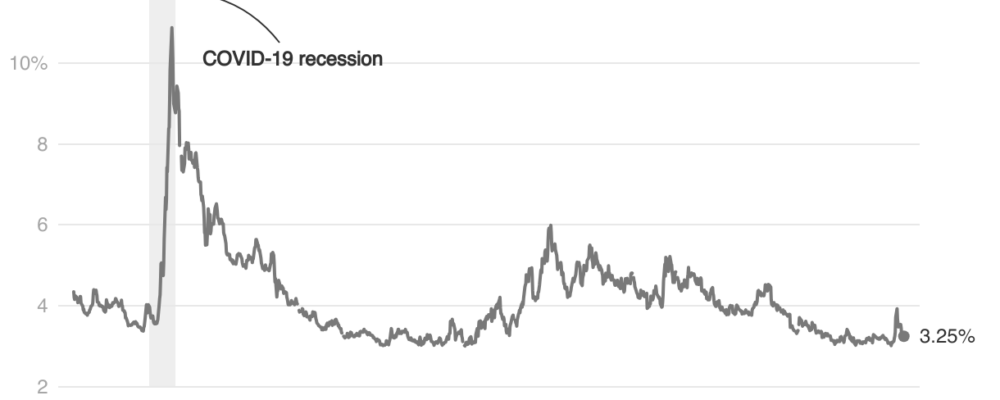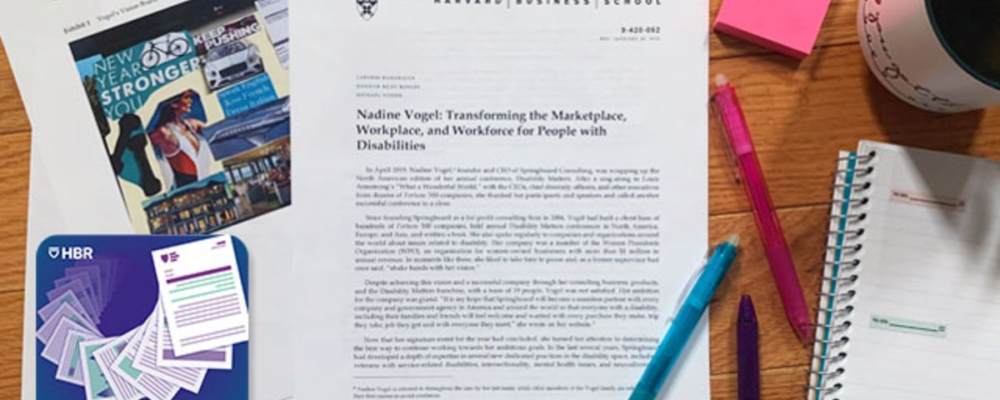In the 1990s, when Harvard Business School Professor Lynn S. Paine was researching and writing about examples of corporate misconduct, she hoped more businesses would take decisive action to root out fraud and other unethical behavior.
Many companies have since formed ethics and compliance programs designed to boost responsibility, yet corporate misconduct has persisted—and in many ways worsened, often to the tune of billions of dollars in losses. Perhaps that’s because organizations are still failing to recognize that misconduct is not just the result of a few bad actors within an organization, says Paine, a Baker Foundation Professor. In fact, the fault often lies with managers who set unrealistic deadlines, production targets, or other objectives that lead decent people to take shortcuts to achieve the goal without recognizing the downstream ethical implications.
In a book chapter she contributed to the recently published Research Handbook on Organisational Integrity, Paine revisits her earlier work and again urges managers to see ethics as an organization-wide imperative, not just a personal issue, and lead accordingly. After all, she says, the stakes are high, not just for the companies involved in scandals, but for all businesses. Find out more in this excerpt from Paine’s chapter:
Research Handbook on Organisational Integrity, edited by Muel Kaptein
Excerpt from Chapter 2: “Managing Organisational Integrity: My Take After Three Decades” by Lynn S. Paine
Revisiting the Core Ideas: The Origins of Corporate Misconduct
When I wrote “Managing for Organizational Integrity,” I was drawing on a decade of research and personal experience that had convinced me that a new approach to corporate ethics was needed. In a brief stint as a lawyer after graduate school and law school, for example, I had been asked to research insurance coverage for a raft of lawsuits being brought against Johns-Manville Corporation for injuries and deaths from exposure to asbestos. At the time, Johns-Manville was the leading manufacturer of asbestos products and supplier of raw asbestos in the United States.
In that work, I learned that company management had known about the dangers of asbestos since the 1930s but had actively suppressed information linking it to cancer to protect the business. I became deeply curious about how respected executives could have made a series of decisions that were so clearly disastrous not only for workers and others exposed to asbestos but for the company itself. Shortly thereafter, in 1982, with its asbestos-related liabilities projected to exceed its assets, Johns-Manville shocked the business world by becoming the largest U.S. industrial corporation ever to declare bankruptcy.
Then, a couple of years later, I was asked to advise on a new Defense Industry Initiative on Business Ethics and Conduct being organised by a consortium of U.S. defence contractors in response to recommendations put forth by the Packard Commission. President Ronald Reagan had appointed the commission to study defence procurement following a series of scandals involving fraud, waste, and abuse in the industry. Chaired by Hewlett-Packard co-founder David Packard, the commission had recommended, among other things, that defence contractors promulgate and enforce codes of ethics that addressed the unique problems of defence procurement.
In my work for the initiative, I learned about the origins of these problems and saw that, contrary to public belief, they could not be chalked up simply to unethical individuals—they were systemic and had their roots in management and organisational practices. By this time, social science research had already shown that people’s behaviour is shaped as much by situational and contextual factors as by individual character.
The 1963 Milgram experiments by Yale Professor Stanley Milgram had shown people’s willingness to set aside their ethical qualms in deference to perceived authority figures (Milgram, 1963). Similarly, the 1971 “prison” experiments by Stanford Professor Philip Zimbardo had demonstrated the power of context to alter people’s ethical orientation; after only a few days in a simulated prison context, the individuals assigned to be “guards” became abusive towards the “prisoners,” causing the “prisoners” to experience acute stress and anxiety (Haney, Banks, & Zimbardo, 1973). Role-play research by Professor Scott Armstrong of the Wharton School had shown that mock boards of directors were willing to approve continued sales of a drug known to be lethal to some customers in fulfilment of their assigned role to maximise value for shareholders (Armstrong, 1977, p. 204). And so on.
Yet, the insights from this research and their implications for management and business ethics had not made their way into business school classrooms or the ranks of professional management. Most people I spoke with back then thought that ethics was a matter of individual character; that character was fixed and unchanging over time; and that corporate misconduct was the work of bad actors, having nothing to do with management.
In the article, I used the case examples of Sears Auto Centers and Beech-Nut Nutrition Corporation to challenge the view that individual character is fixed and unchanging, and to show how organisational factors—such as the culture, structure, systems, practices, and processes put in place by management – can corrupt the behaviour of both individuals and the organisation as a whole. At Sears, for example, management implemented a new goal-setting and compensation system to spur sales at the company’s auto repair centres across the United States. Minimum work quotas were introduced, and the hourly wage system was replaced by a system of base pay with productivity incentives for meeting targets. Service advisers were given product-specific sales quotas—sell so many brake jobs, shock absorbers, alignments, and so on per shift – and paid a commission on sales.
Those who failed to meet the quotas could be transferred or have their work hours reduced. The unsurprising result is that when employees found themselves unable to meet the quotas, a significant number of them resorted to exaggeration and lying—telling customers their cars’ brakes were worn out and dangerous when they were not, for example. In the end, Sears faced charges of fraud filed by the state attorney general in each of more than 40 states. The new quota and compensation system apparently did not help Sears’ financial performance. In 1992, the year the scandal came to light, Sears had a $3.9 billion loss, the largest in its then-106-year history (Brooks, 1993).
As this example illustrates, how a company is managed and led can make it harder—or easier—for individual employees to act ethically and for the organisation as a whole to meet its responsibilities to its stakeholders and the public at large. Thirty years on, this seems like an obvious point, but it perhaps bears repeating, as corporate misconduct does not appear to have abated over this period. If anything, its scope, scale, and impact have all increased as companies have gotten larger, more complex, and more far-flung, and the pressures to deliver ever greater returns have intensified.
Consider some of the high-profile cases that have made the headlines over the years since the article was published: healthcare fraud at Columbia/HCA (1997), labour abuses in the supply chain at Nike (1998), unsafe tires at Bridgestone/Firestone (2000), related party transactions and accounting fraud at Enron (2001), accounting fraud at WorldCom (2002), corrupt payments at Siemens (2007), mortgage lending abuses at Countrywide Financial (2006) and Wall Street banks (2008), diesel emissions cheating at Volkswagen (2015), fake accounts at Wells Fargo (2016), bribery at Odebrecht (2016), sexual harassment at Uber (2017), misuse of personal data at Facebook (2018), airliner safety at Boeing (2019), fraudulent financial reporting at Wirecard (2020), opioid marketing at AmerisourceBergen, Cardinal Health, McKesson, and other drug distributors and makers (2022)—to name a few.
Keep in mind that most cases of corporate malfeasance do not make the headlines. The particulars of these cases are quite varied and well worth studying in their own right. Each involves a unique mix of individual, organisational, and external circumstances, and its own set of ethical issues. But they all reinforce the first general point I was trying to make in my 1994 article—that corporate misconduct and irresponsibility are often rooted in organisational and management choices rather than in premeditated wrongdoing by malicious individuals (although, to be sure, that exists as well).
If you dig into these cases, you will find organisational features and management behaviours similar to those discussed in the article, such as managers flying ethically blind and making decisions without any thought for the ethical issues involved. We don’t know precisely what factors went into the decisions made by managers in most of these companies, but for a few the public record provides a glimpse. For instance, a Siemens manager involved in arranging illicit payments for contracts before the scandal broke in 2007 described his role: “I was not the [one] responsible for bribery. I organized the cash” (Schubert & Miller, 2008). “I didn’t really look at it from an ethical standpoint”, he also noted (PBS Frontline, 2008). Similarly, when a top executive of Bridgestone/Firestone was asked by a member of the U.S. Congress about the company’s failure to act more quickly on discovering problems with the safety of its tires, he replied: “I am sorry to say that I believe [we looked at it from a financial point of view but not a consumer safety point of view.]”
In the same vein, lawyers for Enron reportedly reassured executives about certain accounting practices, noting that “no one has reason to believe that it is inappropriate from a technical standpoint” (quoted in Cummings, Hamburger, & Kranhold, 2002). Judging from the overall behaviour of other companies in the ad hoc list above, it seems doubtful that decision makers in any of them put much weight on ethical considerations—if they thought about them at all. Compensation systems that seem to invite, if not encourage, unethical behaviour also show up again and again. The quota and incentive system put in place by managers of Wells Fargo’s community banking division in 2011 is an example.
Interestingly, it was quite similar to the quota and incentive system that got Sears into trouble in 1992. Under the community banking division’s “Great 8” programme, employees were expected to sell an average of eight financial products to each of the bank’s customers and, on that basis, were assigned daily sales quotas. For hitting their targets, employees could earn bonuses of up to $2,000 per quarter on top of their quarterly base salary of $7,500. Daily scorecards ranked individual employees against sales goals, and daily conference calls reviewed branch managers’ performance against quotas set by their regional managers. Managers falling short were reportedly criticised and embarrassed in front of their colleagues.
Between 2011 and 2016, this system seemed to be helping Wells Fargo grow its revenues. In 2016, however, the truth behind the figures came to light. It turns out that employees unable to meet their targets had resorted to opening unauthorised accounts in customers’ names and charging them for unwanted and unneeded products without their knowledge and consent. From 2011 to 2016, employees of the division opened more than 3.5 million fake accounts—notwithstanding the company’s various compliance programmes, ethical business practices initiative, and espoused long-term customer focus.
During this period, the bank had a total shareholder return of more than 100 percent, and the CEO’s compensation averaged over $20 million per year. Weak controls and ethically lax cultures are another feature of the more recent cases as well as the earlier ones. Perhaps the most striking recent example is Odebrecht, the Brazilian conglomerate caught up in Operation Car Wash (Lava Jato in Portuguese), the investigation of corrupt payments in Brazil’s construction industry launched in 2014. Following its admission of guilt for paying bribes and as part of its settlement with Brazilian, U.S., and Swiss authorities, Odebrecht implemented state-of-the-art audit, internal control, and compliance functions. Prior to the scandal, however, the holding company and some other parts of the Group had not had an internal audit or compliance function at all.
By comparison, at Enron or Siemens, for example, compliance and control functions existed while the wrongdoing was ongoing, but these functions were underfunded or understaffed or simply disregarded. Similarly, AmerisourceBergen had a system for reporting suspicious opioid orders, but that system was thinly resourced, and the company’s sales personnel reportedly found ways to circumvent it. I could go on with other examples, but my intent here is not to catalogue all of the organisational and management factors that can lead to corporate misconduct and irresponsibility.
My purpose is to show the continuing importance of understanding that corporate malfeasance cannot be written off to rogue actors or bad people. It is an organisational phenomenon whose roots lie in the decisions that managers make in the ordinary course of managing. How managers make decisions and what they decide – what opportunities to pursue, what goals to set, how to measure performance, how to pay people, how much to invest in risk management, technology, training and so on – together have a profound influence on how individuals do their jobs and whether the company as a whole acts responsibly. While I believe this connection is more widely understood today than it was in 1994, the steady stream of cases involving large-scale corporate malfeasance over the last three decades suggests that it is worth repeating.
Reprinted with permission from Edward Elgar Publishing.
You Might Also Like:
Feedback or ideas to share? Email the Working Knowledge team at hbswk@hbs.edu.
Image: Unsplash/Ivan Vranić
“Harvard Business School is the graduate business school of Harvard University, a private research university in Boston, Massachusetts. It is consistently ranked among the top business schools in the world and offers a large full-time MBA program, management-related doctoral programs, and executive education programs.”
Please visit the firm link to site





